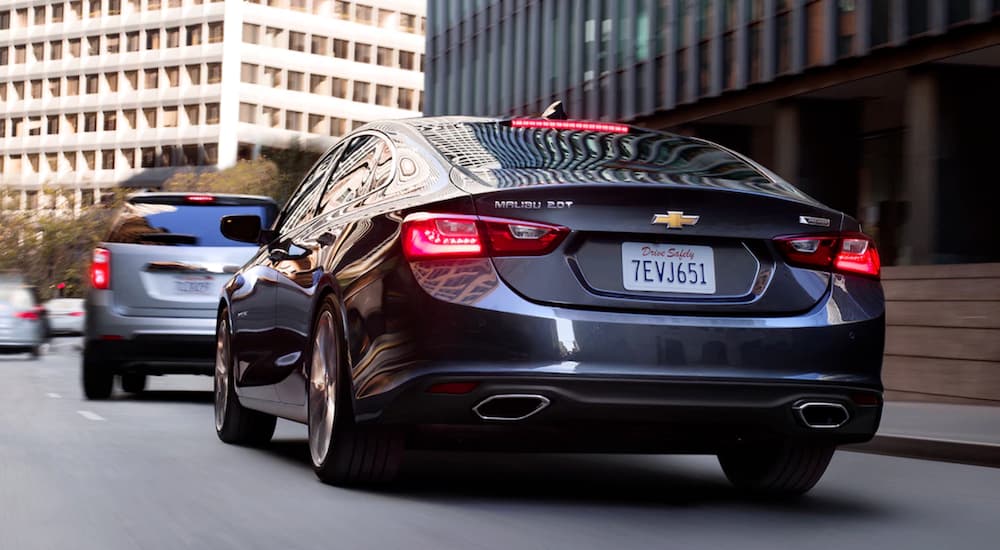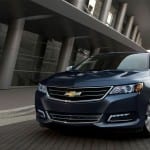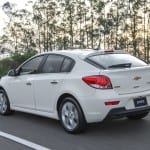Safety is possibly one of the most rapidly changing aspects of the automotive experience. In the past, safety was fairly straightforward involving protective features like seatbelts, airbags, and the like. While these features work wonders in protecting drivers in the event of a crash, they did little in the way of actually preventing the crash itself. Although, times are certainly changing, and Chevy is at the bleeding edge of this change. In recent years, safety features have utilized sweeping smart technology to alert drivers, and even predict traffic movement all in the hopes of protecting the driver and giving them greater awareness on the road. Step into any dealership for Chevy in Dallas or anywhere else in the country, and you’ll find a wide assortment of vehicles decked out in some of the most futuristic safety tech on the market. Some of these safety features are better than others, and a handful of them are bound to not only impress but alter the way you drive entirely.
Adaptive Cruise Control: One Step Closer to Self-Driving Cars
Self-driving cars, once exclusive to science fiction, are becoming a thing of science fact. Beyond the self-driving Tesla and other novelty vehicles, Chevy has introduced a feature that closely resembles the functionality of this ‘hands-free’ capability. Adaptive cruise control once only found in top of the line vehicles can now be found on a wide variety of Chevy vehicles.
But how does adaptive cruise control work? Well for starters, adaptive cruise control functions like any other traditional form of cruise control. It keeps the vehicle at a pre-set speed, which can be adjusted by the driver. However, adaptive cruise control takes things to the next level giving drivers the luxury of having the speed automatically adjusted based on the vehicles in front of you. Don’t worry, this system isn’t magic. Adaptive cruise control uses a compilation of smart technology including a radar headway sensor, a longitudinal controller, and a digital signal processor. These tools in synchronous create an absolutely seamless experience.
In practice, if the vehicle in front of you slows down, or if the system detects a vehicle passing in front of you, your car will slow down automatically by taking control of the braking system. Once the path ahead is clear, the system takes control of the accelerator and brings you back up to the preset speed. While adaptive cruise control may feel cutting edge, it is only the beginning of what Chevy has in store for future vehicles.
Forward Automatic Braking and Front Pedestrian Braking

Sometimes you can’t stop the vehicle fast enough. The road can be unpredictable, and drivers can be even more so. Chevy recognizes this and has utilized technology that adjusts for this unpredictable traffic hazard. Enter automatic braking and front pedestrian braking. These two separate features further, the idea of the self-driving car, using smart technology to take the wheel and save drivers, passengers, and pedestrians from dangerous collisions.
We know what you may be thinking, “but is it safe?” Well, it is important to keep in mind that no safety system is full proof. Considering how unpredictable the road can be this smart tech can only do so much to prevent a disastrous collision. That said, this safety tech can lessen the damages and offer greater peace of mind to the driver.
So, how does forward automatic braking work? Like adaptive cruise control, automatic braking uses sensors, cameras, radar, and LIDAR (a form of radar that uses light) to detect the world around the vehicle. These tools together provide a kind of bubble of awareness, sensing vehicles, pedestrians, and even nearby objects. Some systems are obtrusive, applying the brakes automatically without alerting the driver, which can lend for quite a jarring experience. Chevy’s system works a bit differently. Instead, Chevy’s automatic braking system alerts drivers that they are at risk of a collision. If the driver doesn’t apply the brakes afterward, the system will do so. It is important to note that Chevy’s automatic braking system works best at very low speeds, as it can do a better job of bringing the vehicle to a full-stop within enough time.
But what about pedestrian braking? Pedestrian braking uses a similar system to garner greater awareness. That said, the pedestrian braking system can only sense the area directly in front of the vehicle, and at night the system is far less effective. Although, that is not to discredit pedestrian braking’s effectiveness. If a pedestrian passes in front of your vehicle, say for instance in a crosswalk, and you begin rolling forward, the system will take control of your brakes and bring you to a full-stop, reducing potential harm to both driver and pedestrian.
Lane Keep Assist and Lane Departure Warnings
Lane drifting or accidental lane change is another factor that can result in a dangerous accident. Lane drifting can cause side-swiping accidents that often result in totaled cars and plenty of bumps and bruises. It is a problem of driving that was thought of as practically unavoidable in many situations; until now. Chevy and many other car manufacturers have installed features like lane keep assist and lane departure technology to protect drivers from the dangerous effects of lane drifting. These features, like adaptive cruise control and automatic braking, take preventative measures to the next level, giving drivers far more awareness of the road around them.
But how do these features work? Well, lane departure warnings in Chevy give drivers clear and succinct alerts to make them aware of lane drift. These alerts are often visible or audible, and hard do disregard while on the road. This feature works by detecting the lane markings in the road; however, as you can expect this feature doesn’t work as well when driving on a road without lane markings.
Lane keeping assist takes lane drift protection to the next level by automatically adjusting your steering wheel, keeping the wheels away from the lane markings. While the driver has to re-center the car in the lane, these minor steering adjustments can do wonders to keep you from drifting out of your lane lines.
Chevy’s Alert System
Not every safety feature has to grab control of the wheel. Alerts can do an excellent job of providing greater road awareness. Side blind zone alerts in Chevy vehicles provide alerts through your side mirror, which can prevent you from moving into another vehicle that would have otherwise gone undetected. Forward collision alerts support Chevy’s forward collision system, detecting vehicles and objects in the front-end of your car and alerting you in order to avoid a crash. Lastly, rear-cross traffic alerts can warn drivers when they’re backing up into another vehicle or object.
The Verdict
When it comes to safety, Chevy doesn’t pull any punches. Across their fleet of vehicles, they’ve made safety a top priority. While they may not have ‘self-driving’ as a feature quite yet, it’s easy to see that Chevy isn’t a long way off from getting there. These features provide excellent peace of mind and give drivers greater awareness of the road and any potential traffic hazards. While there are plenty of other manufacturers out there that make safety their number one goal, we highly recommend that you check out what a Chevy Dallas dealership has to offer you so you can get behind the wheel of one of the safest vehicles on the market.





